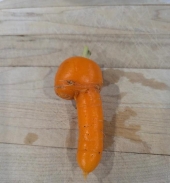


James Bridger wrote:I've got 4 bottles of dandelion wine ageing in the basement, from last spring. I know dandelion wine is supposed to be good, and I followed a proven recipe, but it was pretty nasty right after fermentation. Supposedly dandelion wine needs time to age, though, so i;; crack open a bottle this spring, once new dandelions start coming up, and see if it's transformed into something good.
Ray Sauder wrote:I firmly straddle the fence on this topic. I have a very large boulevard with 42 different flowering weeds growing along with grass. (I have larger wheels and lowered wheel mounts to get a 1 foot high cut to showcase the flowers.) The dandelions are awesome - beautiful yellow flowers, dynamic accumulators, shelter for little grass seedlings under their leaves, dew collectors, survive the summer drought, etc. They help other plants right up to the time when THEY KILL THEM DEAD and take over the kingdom!
So I compromise and let them live 1 full year. Each spring before the flowers turn to seed, I dig up ALL dandelions, getting the whole root, and chopping the plants fine for fertilizer. At the same time I plant a spring bulb into the hole left by the tap root and pay attention to everything else growing in my wildflower lawn. I have thousands and thousands of scilla, siberian squill, snow drops, grape hyacinths, crocus, star of bethlehem, etc. etc. finished blooming and some needing to be transplanted, having roamed too far from home. The other plants blooming along with the dandelions are thousands and thousands of violets, and dandelions are one of only a few seeds that can successfully take root among the violets. I have other plants among the violets but they need my assistance to grow there. Did I mention dandelions are low maintenance? They need no help arriving; only help to keep moving along and leave....
This might seem like a lot of work but there is a surprising thing about dandelion seeds. Unlike other nasties that can survive 50 years to plague future owners, dandelion seeds last only a year or two. So keeping a sort of dandelion-free lawn is pretty easy.
I'll give you another bit of information you will never see anywhere else. It would be nice to have a plant which is allopathic to dandelions, meaning it will kill them or at least not allow new seedlings to sprout. There is one! - autumn hawkbit. O.K. it looks like a dandelion so average observers might think I actually do have dandelions. But the hawkbits are a kinder, gentler version. The flowers are smaller, with many on one stalk. They prevent even their own seed from sprouting so they spread out nicely rather than hogging all the space in one spot. And they bloom in the heat of late summer when not much else is trying very hard. If there is one drawback its that the flower stalks are pretty tall and leggy. Now that my wanted weeds are well established, it is time to shorten the lawn height and with that I will encourage my hawkbits to evolve locally to bloom on shorter stalks.
Ray Sauder




Geoff Colpitts wrote:
You're not, I assume, creating a time capsule or a bomb shelter, I assume.


